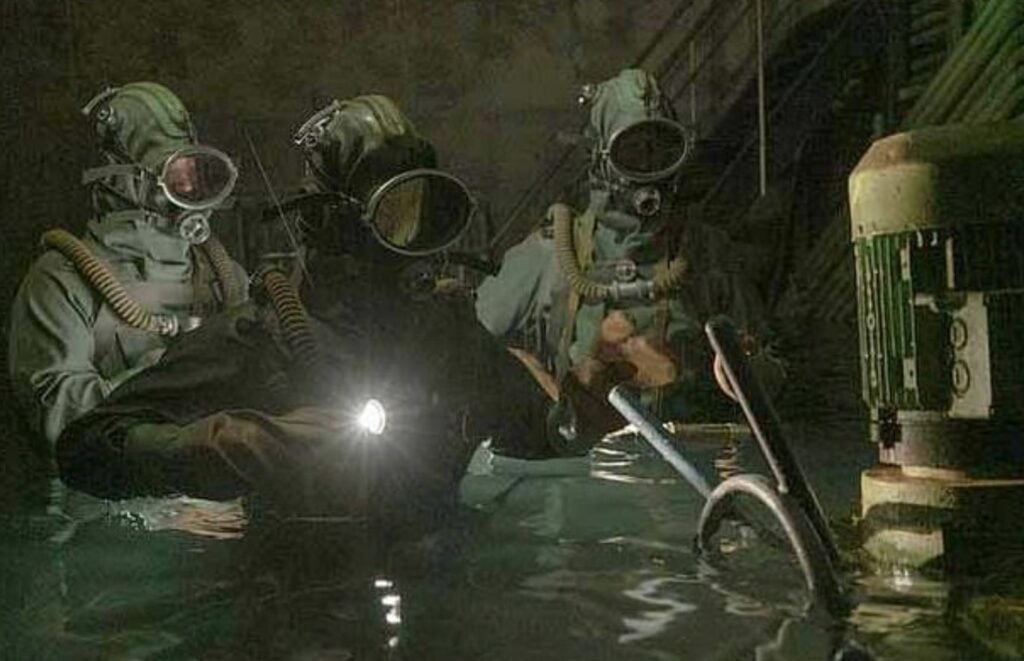The Chernobyl disaster was a nuclear accident that happened on April 26, 1986, at the 4th Reactor in the Chernobyl Nuclear Power Plant. The official death toll recognized by the international community is 31, but there is speculation of more. But did you know a second explosion was prevented by volunteers?
The Chernobyl disaster could have been ten times worse, affecting most of Europe, if three volunteer divers had not drained a pool to prevent a second explosion.
How was the Second Explosion Prevented?
The Chernobyl disaster was beyond description. But it would have been horrific times without the effort and sacrifice of three people.
Just five days after the explosion, on May 1, 1986, Soviet authorities at Chernobyl made a terrifying discovery: the reactor’s core was still melting. The core contained 185 tons of nuclear material, accelerating the nuclear reaction.
A 5 million-gallon pool lay beneath the 185 tons of molten nuclear material. The water served as the power plant’s coolant; the only thing standing between the melting reactor core and the water was a thick concrete slab. The melting core was slowly consuming that slab, descending toward the water in a smoldering flow of molten radioactive metal.
If that white-hot, melting reactor core came into contact with the water, it would cause a massive, radiation-contaminated steam explosion. Much of Europe would be contaminated by the fallout. The death toll would make the initial Chernobyl explosion appear insignificant.
This would trigger a nuclear explosion that, so Soviet physicists calculated, would vaporize the fuel in the three other reactors, level 200 square kilometers or 77 square miles, destroy Kiev, contaminate the water supply used by 30 million people, and render northern Ukraine uninhabitable for more than a century
Stephen McGinty, Journalist
Who were the Three Men Who Saved the World?
The Soviet authorities explained the impending second explosion, the plan to stop it, and the consequences: certain death by radiation poisoning shortly. Three men took their places.
Three men volunteered, knowing it would most likely be their last act. A senior engineer, a mid-level engineer, and a shift supervisor were among them. The shift supervisor’s job was to hold an underwater lamp so the two engineers could identify which valves needed to be closed.
The three divers swam in the dark to the pipe they had seen. They grabbed onto it and climbed hand in hand. There was no illumination. There was no safeguard against the radioactive ionization that was destroying their bodies. But there, in the shadows, were the two gate valves that would save millions of dollars.
If the trio hadn’t jumped in and drained the pool, a second historic explosion would have killed and injured hundreds of thousands, if not millions, more people. The divers twisted them open, and water poured out. The pool began to drain quickly.
When these three men appeared, their mission was completed. Workers and soldiers acknowledged them as heroes. According to reports, the men were literally jumping for joy.
The following day, all 5 million gallons of radioactive water were drained beneath Reactor 4. The water was gone when the melting core above devoured its way through to the pool. There was no further explosion.
Many heroes have performed heroic acts for others despite having only a slim chance of survival themselves. But these three men were well aware that they had no chance. They were looking down into the depths of death. And they dove in. They were Boris Baranov, Valeri Bespalov, and Alexei Ananenko. (Source: The Trumpet)
Image from TheSun.Uk
